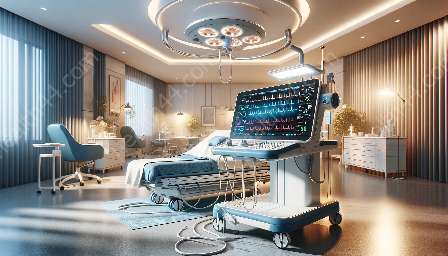Electrocardiographs are integral medical devices used to monitor heart function and diagnose cardiovascular conditions. Proper troubleshooting and maintenance are crucial to ensure the accuracy and reliability of these devices. In this comprehensive guide, we will explore essential tips for troubleshooting and maintaining electrocardiographs, including key maintenance procedures, common issues, and best practices.
Understanding Electrocardiographs
Before delving into troubleshooting and maintenance, it's important to comprehend the basic components and functions of electrocardiographs. These devices are designed to record the electrical activity of the heart over a period of time, producing an electrocardiogram (ECG) that can provide valuable insights into cardiac health.
Common Components of Electrocardiographs
Typically, an electrocardiograph consists of electrodes, lead wires, and a recording device. The electrodes are attached to the patient's chest, limbs, and sometimes the precordial region, and they detect the electrical signals produced by the heart. Lead wires transmit these signals to the recording device, which displays the ECG waveform.
Troubleshooting Electrocardiograph Issues
It's essential for healthcare professionals and technicians to be well-versed in troubleshooting common issues that may arise with electrocardiographs. Some common problems include sensor disconnections, artifact interference, and electrical noise. By understanding these issues, operators can quickly identify and address the root cause.
Troubleshooting Tips:
- Inspect lead wires and electrodes for damage or disconnection
- Check for proper skin preparation and electrode placement to minimize artifact interference
- Ensure that the electrocardiograph is properly grounded to mitigate electrical noise
- Regularly calibrate and test the recording device to maintain accuracy
Maintenance Best Practices
Regular maintenance is essential to uphold the performance and longevity of electrocardiographs. By implementing a proactive maintenance regimen, healthcare facilities can minimize downtime and ensure the consistent accuracy of ECG recordings.
Key Maintenance Procedures:
- Regularly clean and inspect electrodes and lead wires for wear and tear
- Verify proper functionality of the recording device, including display clarity and printing quality
- Perform routine calibration and testing to confirm accuracy and calibration of measurements
- Replace consumable components such as paper and ink as needed to maintain output quality
It's important to adhere to the manufacturer's recommended maintenance schedule and procedures to ensure compliance with regulatory standards and optimize device performance.
Ensuring Accurate ECG Interpretation
Accurate interpretation of ECGs is crucial for proper diagnosis and treatment planning. Healthcare professionals should be trained to recognize common ECG patterns and abnormalities to effectively identify potential cardiac issues.
Continuous Training and Education
Regular training and ongoing education for healthcare professionals and technicians are vital to enhance their proficiency in ECG interpretation and troubleshooting. This includes staying updated on new technologies, best practices, and evolving standards in electrocardiography.
Utilizing Advanced Features
Many modern electrocardiographs offer advanced features such as digital signal processing, automated measurements, and connectivity options for data transfer and analysis. Leveraging these features can enhance the efficiency and accuracy of ECG recordings, contributing to improved patient care and diagnostic precision.
Conclusion
Proper troubleshooting and maintenance of electrocardiographs are essential to ensure optimal device performance and accurate ECG recordings. By understanding the common issues, implementing regular maintenance, and staying updated on best practices, healthcare professionals and technicians can contribute to the reliability and effectiveness of these critical medical devices.


